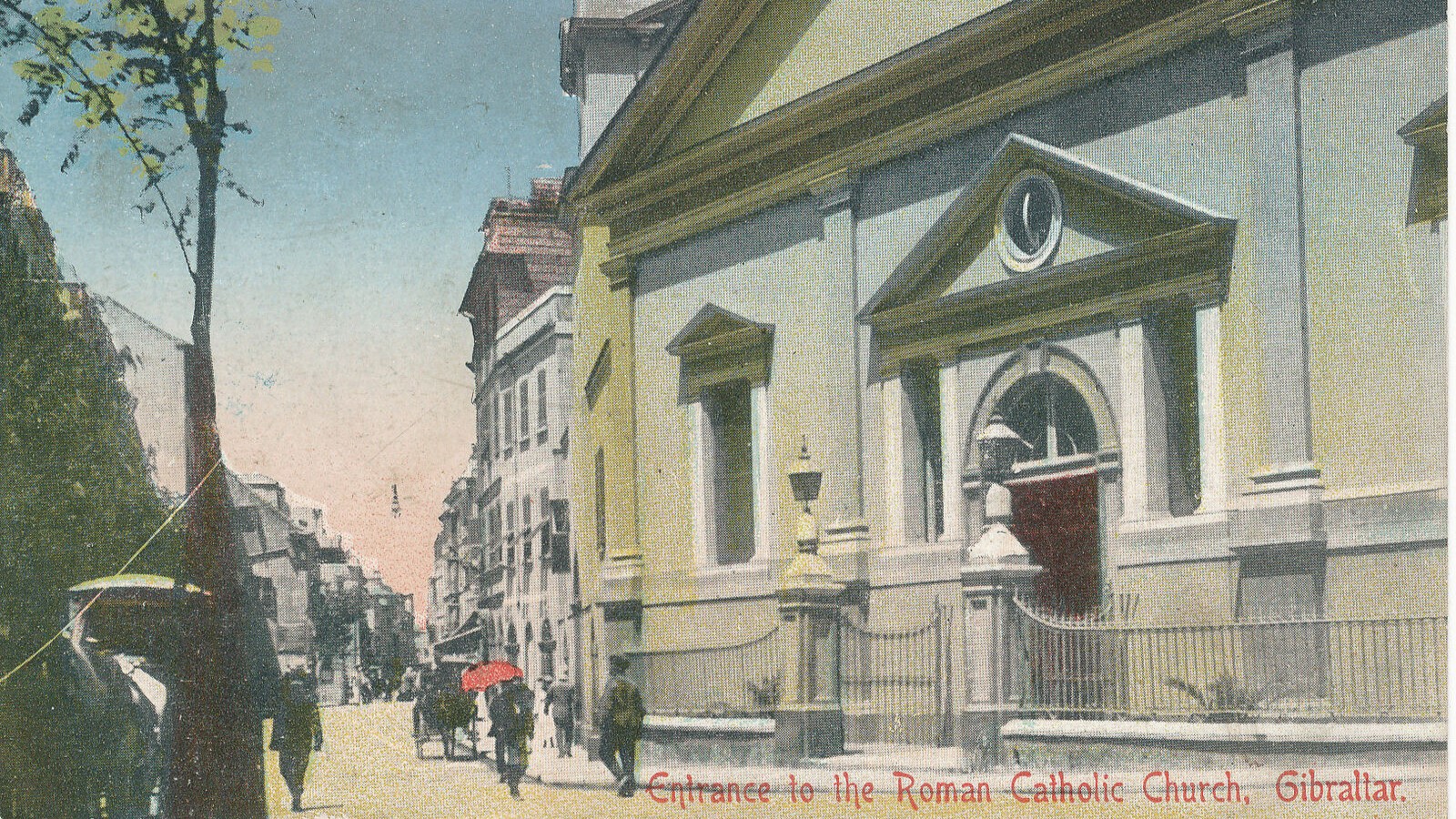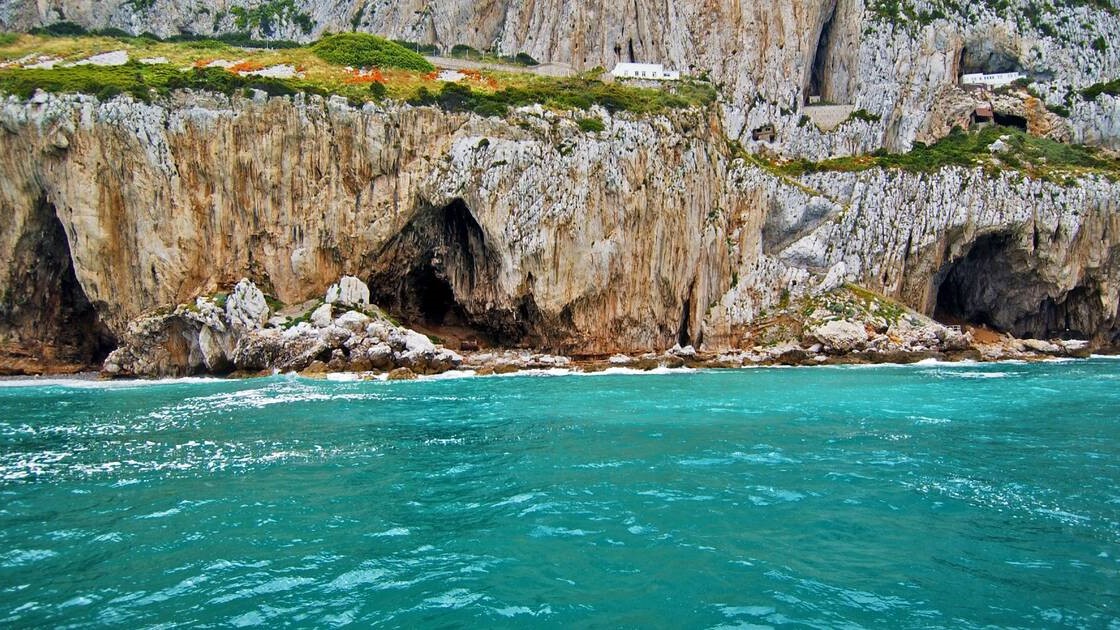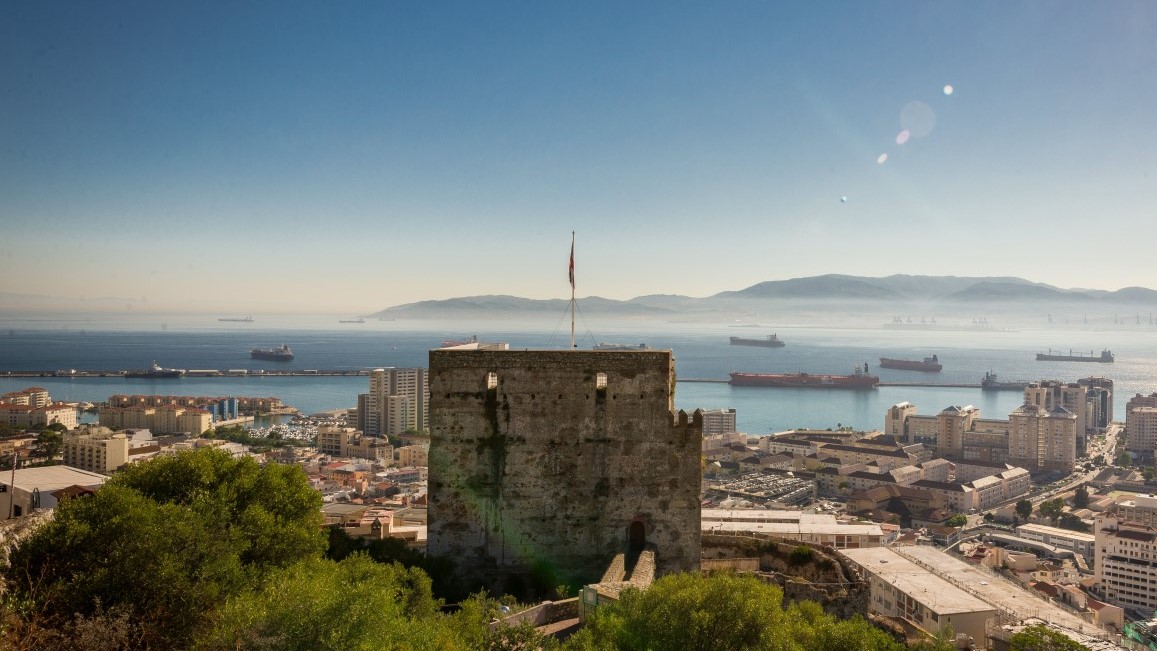The Moorish Castle: The Front-Runner
The strongest contender remains the Moorish Castle, particularly the Tower of Homage, which rises prominently above the Upper Town and dates back to the early 14th century. Rebuilt in 1333 by the Marinid dynasty after recapturing Gibraltar from the Spanish, the Tower is widely recognized as the oldest standing structure of any scale on the Rock.
Although the current visible parts of the castle are from the 14th century, the site itself likely saw fortification as early as the 8th century, following the landing of Tariq ibn Ziyad in 711 AD. While those earlier elements are no longer standing, the site's continuous use reinforces its primacy in Gibraltar’s architectural heritage.
Its thick stone walls, strategic placement overlooking the Bay, and symbolic power make the Tower of Homage a clear icon of Gibraltar's Moorish past. Today, it is not only a major tourist site but also features in the territory's coat of arms, coins, and stamps.
.jpg)
Tankerville’s Gatehouse: A Hidden Medieval Relic?
While the Moorish Castle grabs most of the attention, some lesser-known structures present intriguing counterarguments. One such example is the Gatehouse at Tankerville, often overlooked but historically significant.
Tucked away behind modern buildings near Flat Bastion Road, this medieval-style gate, believed by some to be Moorish or early Spanish, may have originally served as part of a fortified estate or as an access point to a religious or defensive site. Its exact origin remains uncertain—some theories place it as early as the 14th or 15th century. Though heavily restored, parts of the stonework and layout suggest genuine antiquity.
The Tankerville Gatehouse doesn’t boast the scale or prominence of the Moorish Castle, but its survival and relatively original footprint have kept it in the conversation when discussing Gibraltar’s oldest buildings. Local historians continue to call for deeper archaeological analysis to better determine its origins.
.jpg)
The Convent: Layers of Colonial History
Another strong contender in terms of age and continuous use is The Convent, located at the southern end of Main Street. Now the official residence of the Governor of Gibraltar, The Convent began life in 1531 as a Franciscan friary. Though substantially modified over the centuries, especially after the British takeover in 1704, its original 16th-century fabric still survives.
What makes The Convent especially interesting is its continuity of use—from a religious building under Spanish rule to a colonial administrative residence under British control. Elements such as the cloister, chapel, and underground crypts retain architectural details from the original construction, even as the facade and interiors were Anglicised during the 18th and 19th centuries.
While it doesn’t predate the Moorish Castle, The Convent is arguably the oldest building in Gibraltar still in formal use, making it a key part of the narrative.

Cathedral of St. Mary the Crowned
The Cathedral of St. Mary the Crowned, also situated on Main Street, is another site that complicates the timeline. Originally built in 1462 after Gibraltar was captured by Castilian forces, it was constructed on the site of a former mosque, which itself was built on earlier religious foundations.
Much of the cathedral was reconstructed after the Great Siege of Gibraltar (1779–1783), and again in the 19th century, so only portions of the original 15th-century stonework remain. Nevertheless, as a continuous site of Christian worship and a central spiritual landmark, it holds great historical weight.
Other Notable Structures
There are other historical buildings in Gibraltar worth mentioning as contenders or at least footnotes in this discussion:
Ince’s Hall Theatre: Originally a 19th-century military building but thought to be built on the foundations of older stores or barracks.
The Old Guard Room on Willis’ Road: While simple in design, this unassuming stone structure may date back to the early British period in the 1700s and shows continuity in military architecture.
Grand Casemates Gates and Northern Defenses: Parts of these may incorporate older masonry dating to the Spanish or even Moorish periods, though they’ve been rebuilt and reinforced repeatedly.
What About Prehistoric Structures?

Of course, if one stretches the definition of “building” to include man-used natural structures, then Gorham’s Cave Complex far outdates anything else. This series of sea caves was occupied by Neanderthals over 50,000 years ago, with archaeological finds suggesting extended habitation and possible symbolic behavior (such as wall markings). However, because these are natural caves rather than man-made constructions, they fall outside the traditional definition of a "building."
A Case of Definitions
So how do we define “oldest building”? If we mean oldest standing man-made structure, then the Moorish Castle still wears the crown. If we focus on oldest continually used building, The Convent could be a worthy rival. If we consider undervalued and mysterious relics, Tankerville’s Gatehouse might deserve more attention than it gets. And if we simply want to find the oldest human-occupied location, Gorham’s Cave predates them all by tens of thousands of years.
Conclusion
Gibraltar’s history is too complex to be neatly summed up by a single date or structure. But if we are to name the oldest surviving building in a traditional sense, the Moorish Castle’s Tower of Homage, standing since at least the 14th century, remains the clearest answer. That said, other structures—from the Tankerville Gatehouse to The Convent and even to layers hidden within Gibraltar’s churches and bastions—offer rich, complementary narratives.
In a place where empires have come and gone, and where stone has been reused, repurposed, and rebuilt countless times, perhaps the real story lies not in identifying a single “oldest” building, but in appreciating how each layer of stone tells a different chapter of Gibraltar’s enduring history.
